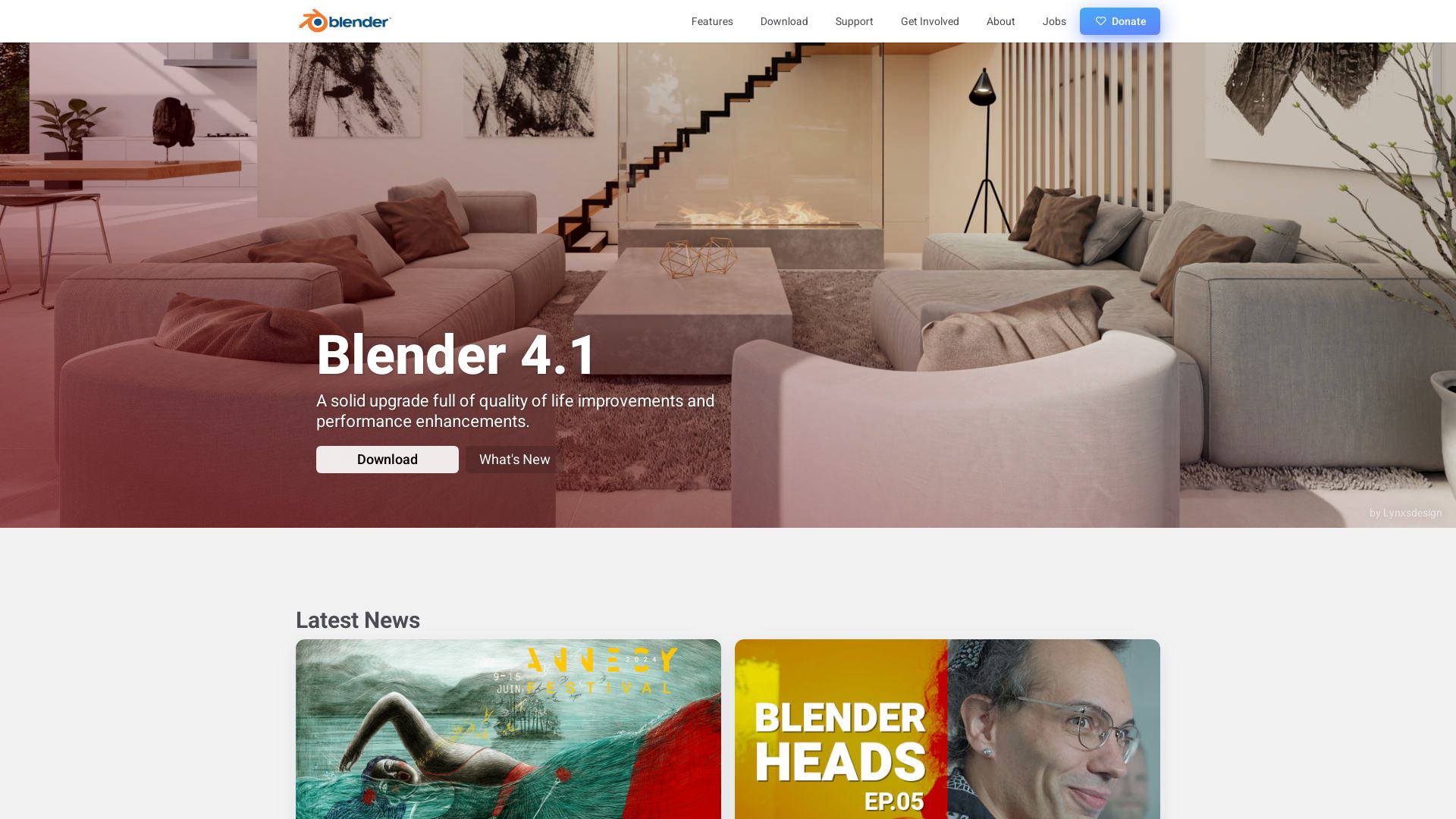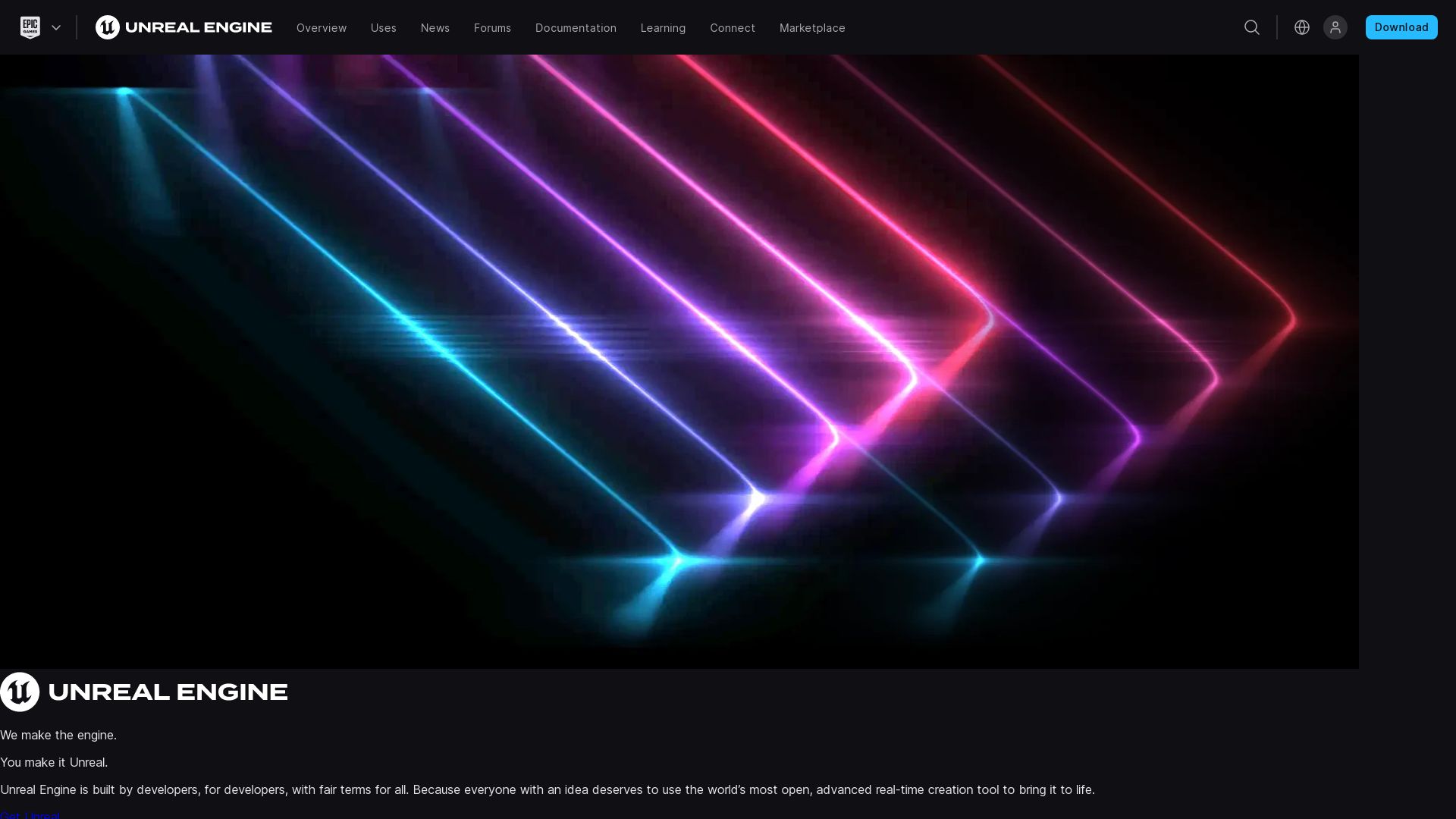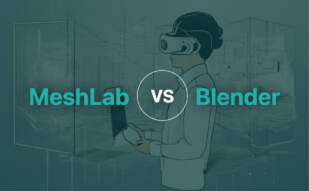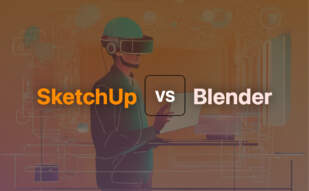
Blender

Introducing Blender, a powerful, free, and open-source 3D computer graphics software toolset primarily authored in C, C++, and Python. Utilized for purposes spanning from creating animated films to actualizing compelling virtual reality experiences, Blender’s versatility is truly unparalleled.
Blender Top Features
- Comprehensive 3D modeling capabilities coupled with UV mapping and texturing for detail-oriented design.
- Integrated digital drawing and raster graphics editing for enhanced visual finesse.
- Advanced rigging and skinning for realistic animation design.
- Robust fluid, smoke, particle and soft body simulation tools for creating high-quality special effects.
- Offering video editing and compositing capabilities within the same platform, consolidating the creative process.
| Feature | Description |
| Support for 3D File Formats | Enables import/export in diverse formats like Alembic, 3DS, FBX, DXF, SVG, STL, UDIM, USD, VRML, WebM, X3D, OBJ. |
| Availability in Languages | Blender is accessible in 36 different languages, underscoring its global reach. |
| Operating Systems Suppported | Blender works seamlessly across platforms – Linux, macOS, Windows, BSD, Haiku. |
Blender Limitations
- Depreciation of Blender Game Engine in the 2.8 release, potentially limiting its application in game development.
- Removal of Blender Internal in 2.80 release shifts all dependence on Eevee renderer, which may require users to adapt.
Blender Pricing
Among Blender’s many merits is its pricing- it’s absolutely free. Established and managed by the non-profit Blender Foundation, its development is driven by a community of contributors, transforming the realm of 3D graphics software.
Blender Use Cases
Use case 1: Animated Films
Whether a studio or a solo artist, Blender’s integrated toolset enables you to craft captivating animated films. From modeling to adding the final aesthetic touches, Blender empowers comprehensive creation.
Use case 2: Virtual Reality
For virtual reality developers, Blender’s 3D modeling and simulation tools offer an efficient way to create immersive experiences. Its multilingual support and cross-platform availability ensures that VR creation is not bounded by language or OS limitations.
Use case 3: Visual Art
Blender is a boon for visual artists– with its digital drawing and raster graphics editing features, intricate artwork can be crafted with precision and possibility.
Arnold
Meet Arnold, an international computer heavyweight from Spain, slicing and dicing 3D, computer-generated scenes like a matador with pixels. Named after its creative mastermind, Marcos Fajardo, this rendering champ was brought to life by Solid Angle (now under the Autodesk Umbrella) and Sony Pictures Imageworks. Arnold is all about that photorealistic approach – you know, the kind that has you questioning what’s real and what’s just mathematically beautiful.
Arnold Top Features
- A ubiquitous presence in the industry, particularly for film and TV animation and VFX. Don’t believe us? Ever heard of little known shows like ‘Game of Thrones’ or ‘Westworld’?
- Runs natively on x86 CPUs and welcomes Nvidia RTX-powered GPUs with open arms since March 2019. Basically, it plays nice with everyone.
- A monster at rendering high-resolution texture maps, thanks to OpenImageIO integration. It’s like giving Picasso unlimited color options.
- A fully programmable API and uses shaders written in C++ or Open Shading Language. Say ‘Hola!’ to customization.
| The Arnold Chronicles | Why Care? |
|---|---|
| Chief Architect: Marcos Fajardo | Having the creator as the overseer often ensures authenticity and innovation. |
| Received Scientific and Engineering award in 2017 | Academy-approved! Enough said. |
| Used by over 300 studios! | Popularity often speaks volumes about quality. |
Arnold Downsides
- Main contender in the ring: V-ray, the Godzilla of render engines.
- Though Arnold coos with CPUs and GPUs, the ongoing optimization could intimidate newbies.
Arnold Pricing
Arnold whispers sweet nothings like “monthly,” “yearly,” and “discounted packs.” Targeting multiple users? It’s got you covered. For detailed info, hit Autodesk’s e-store, and let their digital salesfolk woo you.
Arnold Use Cases
Use Case 1: Animation & VFX for Film and Television
With credits that include big-ticket numbers like ‘Thor’, ‘Gravity’, and the ‘Alice in Wonderland’, Arnold has proved to be a versatile tool for bringing stunning visuals to life.
Use Case 2: Large Scale Projects
Compatibility with render farms like RebusFarm means you can scale up Arnold’s rendering capabilities to handle even the largest projects. Perfect when you’re creating the next ‘Avatar’.
Use Case 3: Rendering Education
So you aspire to be an Oscar-winning visual effects maven? Arnold’s online learning avenues make it an ideal tool for students of the rendering craft.
Unreal Engine

Developed by Epic Games, the Unreal Engine (UE) is a powerful 3D computer graphics game engine with a history dating back to 1998. Initially created for first-person PC shooter games, UE has grown into a multi-purpose tool used across game genres and even in film and television.
Unreal Engine Top Features
- Multi-platform Support: covers desktop, mobile, console, and virtual reality platforms.
- UnrealEd: An integral level editor that supports real-time constructive operations for solid geometry.
- Unreal Development Kit: A free version of UE3’s SDK, enabling users to create iOS games and apps.
- Unreal Engine Marketplace: A platform where users can buy or sell their creations.
| Feature | Description |
|---|---|
| Latest Release | The most recent version, Unreal Engine 5, was launched in April 2022. |
| Integration | UE includes features from companies it has acquired like Quixel. |
| Scripting Language | The preferred development language is C++, allowing implementation of complex functionalities with relative ease. |
Unreal Engine Downsides
- Fees: Epic charges 5% of revenues over USD 1 million for commercial use.
- Learning curve: The complexity of Unreal Engine can pose a challenge, especially for novice developers.
Unreal Engine Pricing
Unreal Engine is free for all users but Epic charges 5% of revenue for products that generate more than $3,000 per quarter.
Unreal Engine Use Cases
Use case 1: Game Development
Unreal Engine provides developers with cutting-edge tools to create immersive, visually compelling games, regardless of the platform: desktop, mobile, or console.
Use case 2: Film and Television Production
Unreal Engine’s advanced features give creators the ability to design stunning visual effects and virtual sets, revolutionizing traditional production workflows in film and television.
Use case 3: AR/VR Applications
With its end-to-end VR support, Unreal Engine empowers developers to construct engaging augmented and virtual reality experiences.
Unity

Established in 2005, Unity is a renowned game development engine, capable of crafting immersive 3D and 2D games. This platform is recognisable for its adaptability across several operating systems, facilitating a wide array of applications from Augmented Reality experiences to highly detailed 3D simulations.
Unity Top Features
- Cross-Platform Capability: Allows launch of games on multiple platforms including Android and iOS.
- Advanced Tools and Features: Provides a suite of tools, rendering technology, and features to aid high-quality game creation.
- Dynamic Asset Store: An integrated store housing diverse pre-designed textures and features, which aids developers in conceptualizing game designs.
- Coding Flexibility: Offers a variety of coding languages including BOO script, Javascript, and C#.
- Active Developer Community: A vibrant community offering assistance, problem-solving and constructive feedback.
Unity Disadvantages
- The evolving pricing model is an area of concern as solo and indie mobile developers perceive the fees as potentially damaging.
- Retroactive fees announced by Unity triggered open mistrust among developers.
- Developers fear the new pricing might impede digital preservation efforts and destabilize their financial sustainability.
Unity Pricing
A new pricing model is scheduled to come into effect from January 1, 2024. Developers will be charged an install fee once their game crosses $200,000 in revenue and surpasses 200,000 installations. Additionally, Unity ensures fraud detection practices to protect developers from incurring costs for pirated copies.
Unity Use Cases
Use case 1 – Augmented Reality Applications
Unity serves as an instrumental platform for developers wishing to venture into the creation of Augmented Reality applications, offering tools and features that bring ideas to life.
Use case 2 – Cross-Platform Game Development
The platform’s cross-compatibility with numerous operating systems makes it a go-to choice for developers aiming at multi-platform game launches.
Use case 3 – Indie Developers
Despite pricing concerns, Unity’s active community, asset store, and design-flexibility make it an attractive platform for indie developers honing their game development skills.
Substance Designer
Meet Adobe’s Substance Designer, part of their Substance 3D Package. An advanced material-authoring software blazing a path through the 3D graphics world. It’s designed to create meshes and materials, and is renowned for producing top-notch tiling textures.
Substance Designer Top Features
- Version 13.0 brings Spline and Path tools for supreme 2D shapes generation & manipulation
- ‘Portal’ functionality for Dot nodes elevates the organisation of node graphs
- Surface patterns creation and pattern scattering control sections
- Image warping control for innovative design options
- Substance Engine 9 with support for loops repetition within Substance Function Graphs
| Spline tools | Path tools |
|---|---|
| 25 new nodes for generating, merging, transforming, rendering splines | 10 nodes for generating paths from grayscale masks, converting to splines |
| ‘Portal’ functionality for data transfer without wire connection | Added support for Substance Engine 9 loops repetition |
Substance Designer Downsides
- Discontinued procedural geometry toolset
- Model graphs have been removed entirely
- Requires minimum system specifications — 64 bit processor and 8GB RAM
Substance Designer Pricing
Substance Designer has a license cost of $149.99 (via Steam) or a subscription fee of $19.99/month or $219.88/year via Adobe’s Substance 3D subscriptions. A higher-priced Linux edition demands a $1,198.88/year Creative Cloud Plan for Teams.
Substance Designer Use Cases
Use Case 1: Game Development
Used in popular games like Deathloop and Assassin’s Creed Valhalla, this tool is indispensable for game developers. Its compatibility with any engine makes it a favorite among the gaming community.
Use Case 2: 3D Modeling and Texturing
Substance Designer excels in creating intricate tiling textures, positioning it as a vital tool for 3D professionals.
Use Case 3: Integrated Workflows
When paired with Substance Painter for applying textures, layers, and paint to materials, its potential skyrockets, creating a seamless workflow for professionals.
Sculptris
Sculptris hails from the stables of Pixologic, acting as a virtual clay mesh provider for digital editing, ideal for artists focusing purely on the visual aspect of their projects.
Sculptris Top Features
- Sculptris Pro interface altering model topology on-the-fly.
- The technology anticipates and supports varying topology density based on brush detail.
- Real-time application of decimation, optimising end results for users.
- “Tessimation” – a unique amalgamation of tessellation and decimation.
- Strong compatibility with DynaMesh, imported models, and ZSphere adaptive skins.
| Feature | Advantages |
|---|---|
| Sculptris Pro | Offers artistic freedom and technical prowess, enhancing ZBrush’s capabilities. |
| Automatic Triangulation | With every brush stroke, the tessellation is automated, making it tailored for fine detailing or broad surface deformations. |
| Linked with ZBrush | Sculptris Pro is integrated with ZBrush, opening up a suite of additional features and pluggable benefits. |
Sculptris Downsides
No drawbacks are identified in Sculptris based on the information provided.
Sculptris Pricing
Details about Sculptris’ pricing or availability are not clearly mentioned in the company summary provided. But as it’s integrated with ZBrush, it could be part of its offerings.
Sculptris Use Cases
Use case 1: Gaming
Sculptris is an impactful tool for gaming design due to its fine detailing capability and real-time decimation application.
Use case 2: Animated Films
Sculptris aid in creating photorealistic animations in films with its automated triangulation and variable topology based on brush detail.
Use case 3: Industrial Design
Thanks to its integration with ZBrush and artistic freedom it provides, Sculptris is ideally suited for industrial design for 3D modeling and printing.
Patrick Daugherty
Content writer @ Aircada. Merging AR expertise with a love for late-night gaming sessions.





